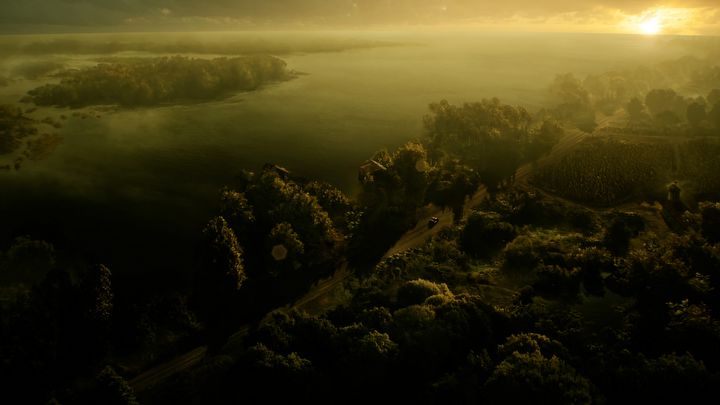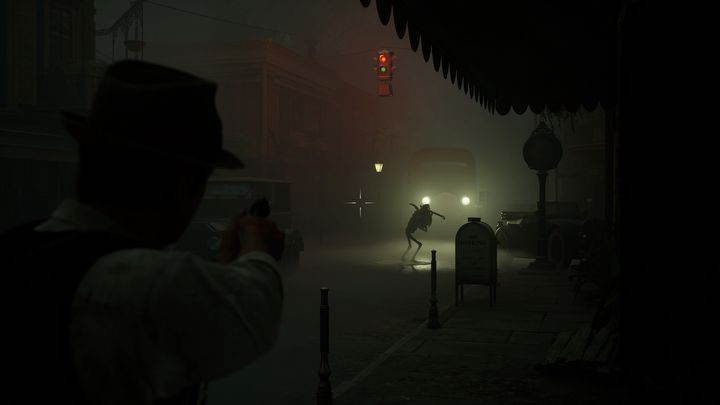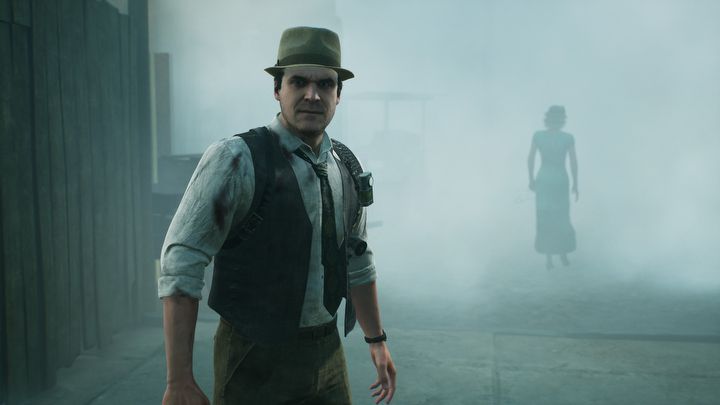Alone in the Dark Review - It Ain't Easy Making a Classic Come Back
A famous franchise makes a comeback with its modernized reboot, but can it live up to the legacy?
The review is based on the PS5 version. It's also relevant to PC, XSX version(s).

If you respect the original Alone in the Dark series and wonder how it could have gone so astray in the new millennium, we have good news. The latest installment of the series may not be a perfect game, but it corresponds well with the original known from the 90s.
The Alone in the Dark series had a significant role in shaping the direction that video games took in the 1990s. It is precisely the adventures of Detective Edward Carnby – or rather the way they are portrayed – that crystallized a completely new genre of survival horrors. So, it is safe to surmise that without the work of Infogrames studio, titles like Resident Evil would not have been created – or that they'd look completely different.
- interesting rearrangement of Alone in the Dark motifs from the 90s...
- correspondence of story threads with the source material
- good casting of David Harbour for the role of Edward Carnby
- cut-scenes reflecting the atmosphere of the 1920s
- Derceto looks great
- really interesting approach to some tasks
- collectibles that deepen the lore and affect the gameplay
- some mini-games have a nice concept...
- ...but they're described too vaguely all too often
- visual problems
- gameplay archaisms
- numb background characters
- insufficiently explaned puzzles
- the game starts very slowly, the beginning is a bit boring
The releases of Alone in the Dark in the new millennium, however, didn't have a similar impact on virtual entertainment – it was remembered as somewhat unsuccessful. So it's no surprise that many fans of the series are worried that the new Alone in the Dark may meet a similar fate. However, this didn't happen, and fans get a really solid game with this one. Not flawless, but at least faithful to the original – and moreover, winking to players familiar with the original.
Derceto. Dark. Deja vu
As we're dealing with a reboot of the series, the adventure in Alone in the Dark can feel like returning to your childhood home after years – familiar shapes and memories emerge, but a thorough reshuffling effectively distorts the old order of remembered reality. The creators of the new Alone in the Dark reinterpret events from the first installments, using familiar characters but altering the narrative foundations for fun.
The main characters are Emily Hartwood and Edward Carnby again – the former hires the latter to help solve the mysterious disappearance of her uncle, Jeremy, who was staying at Derceto – a facility for revitalizing people with specific health problems. This choice does not affect the gameplay – however, it determines the cut-scenes, interaction with encountered NPCs, and a part of one of the chapters that's different for both protagonists (there are a total of 5 chapters).
As for the gameplay, however, it's closest to the latest installments of Resident Evil. The static camera known from the original has been shelved (although there's a part of the game shown in this perspective – and it's quite an interesting experience, showing that the game could be entirely presented in this perspective), in favor of the modern go-to, TPP view. Edward or Emily navigate the Derceto mansion, seeking clues to solve Jeremy's disappearance and items to unlock further closed-off areas.
What you find is shared
However, forget about free exploration and racking your brains to gain access to inaccessible locations. Instead, we're led around a four-story building in a somewhat linear fashion – rooms that are unnecessary for the story of a given chapter remain locked, and in the notes, you can quite easily locate the key items for pushing the plot forward. The variety of intellectual puzzles also isn't mind-boggling – we have to solve puzzles mainly related to safes, arranging mosaics, and tuning a talisman used for traveling between dimensions. And as for the tile arranging, it deserves praise – because apart from swapping the places of individual pieces in the whole composition, you also have to rotate them to match the pattern. However, activities like the safes and tuning the talisman really gave me a hard time.
What's wrong with the former? The discovery of the secret combination to one of them is encrypted in a poem. The number of letters in the underlined words suggests a digit – which, however, does not mean the number of dial turns in a certain direction, but... choosing a specific numerical value indicated on the clock. This is just one example of non-intuitive mechanics. Setting the starting position for the guessed "coordinates" on the talisman largely depended on correctly choosing the first digital value for the largest ring – however, it was never mentioned that the indicator of the first value is... at the bottom of the screen, not the top. So I wasted half an hour on this, cursing the illogicality of such solution. The situation was similar with the mini-game of sharpening the image in the telescope lens. Nowhere was it mentioned that the vision is also adjusted by tilting the joystick to the sides.
VERDICT:
The new Alone in the Dark is just the right game for fans of games full of suspense, who are tired of annoying jump-scares. So if you value the captivating atmosphere over adrenaline jumps in similar titles, you will really enjoy this reboot.
Check all our reviews on Metacritic and Opencritic.
Despite these quirks, it's fair to say that solving some of these puzzles requires detective work – finding clues in notes or connecting facts in the environment. The optional collectibles, also known as Lagniappe, divided into sets, also deserve praise. Completing several items within one family of items unlocks a lore curiosity, a piece of equipment, or an alternative ending. And it's really cool that in order to get them all, you have to play the game as both Emily and Edward – the cut-scenes encountered along the way, quite good, stale from cigarette smoke and dripping with vinyl jazz, are also different depending on who we decided to play as.
Atmospheric, but with some shortcomings
The locations also deserve praise, they are quite thoughtfully designed and pleasing to watch, with a variety of details. The abrupt changes in the building's decor to alternative versions of Derceto also make quite an impression – however, it's a pity that they are signaled by a notable crunch in the animation and a drop in the frame rate. The visuals are impressive until you have to look at the ugly side characters – the interiors of the facility and faces of Edward (voice and looks of David Harbour, known from Netflix’ Stranger Things) and Emily (Jodie Comer) look very decent, the side characters lack life and look more like moving mannequins than believable persons.
The artificiality that breaks the immersion can be noticed not only in the faces, but also in the hairstyles of the secondary characters, which bounce around cheerfully as if the laws of physics did not apply to them at all. Some visual effects also work horribly, like the fog in the intro, which looks like green pancakes – such situations occur regardless of the chosen graphics mode (on top of that, in quality mode on PS5, the frame rate drops to unacceptable values).
A whiff of old school
Strongly archaic gameplay, which could be avoided in 2024, is also painful. The main issue here are invisible walls, quite often occurring in Derceto and other places of Jeremy's search. The protagonist can't just fall off a bridge into a lake or walk into a dense fog – though it's tempting to check if the developers have prepared some alternative, unpleasant fate for the careless player. The same goes for objects – after each chapter, objects that we will no longer use are archived in the inventory, which somewhat flattens the review of collected information and detective "brainstorming."
The game's old-school charm shines through in the alternative hero skins and visual filter changes. You can also enable developer commentary, which you'll stumble upon during exploration, presented in the form of found audio logs.
And you know what? Derceto is cool!
So there are quite a few hitches – some are irritating due to the imprecise communication to the player about what to do, others spoil the immersion, and others still can be considered outdated. Ultimately, they don't affect the ability to complete the game, but they significantly alter the gaming experience.
If only the problems concerning the graphics would be improved, the game could easily be given a half a point higher rating. The new Alone in the Dark is just the right game for fans of games full of suspense, who are tired of annoying jump-scares. So if you value the captivating atmosphere over adrenaline jumps in similar titles, you will really enjoy this reboot.
Alone in the Dark
Alone in the Dark Review - It Ain't Easy Making a Classic Come Back
A famous franchise makes a comeback with its modernized reboot, but can it live up to the legacy?





